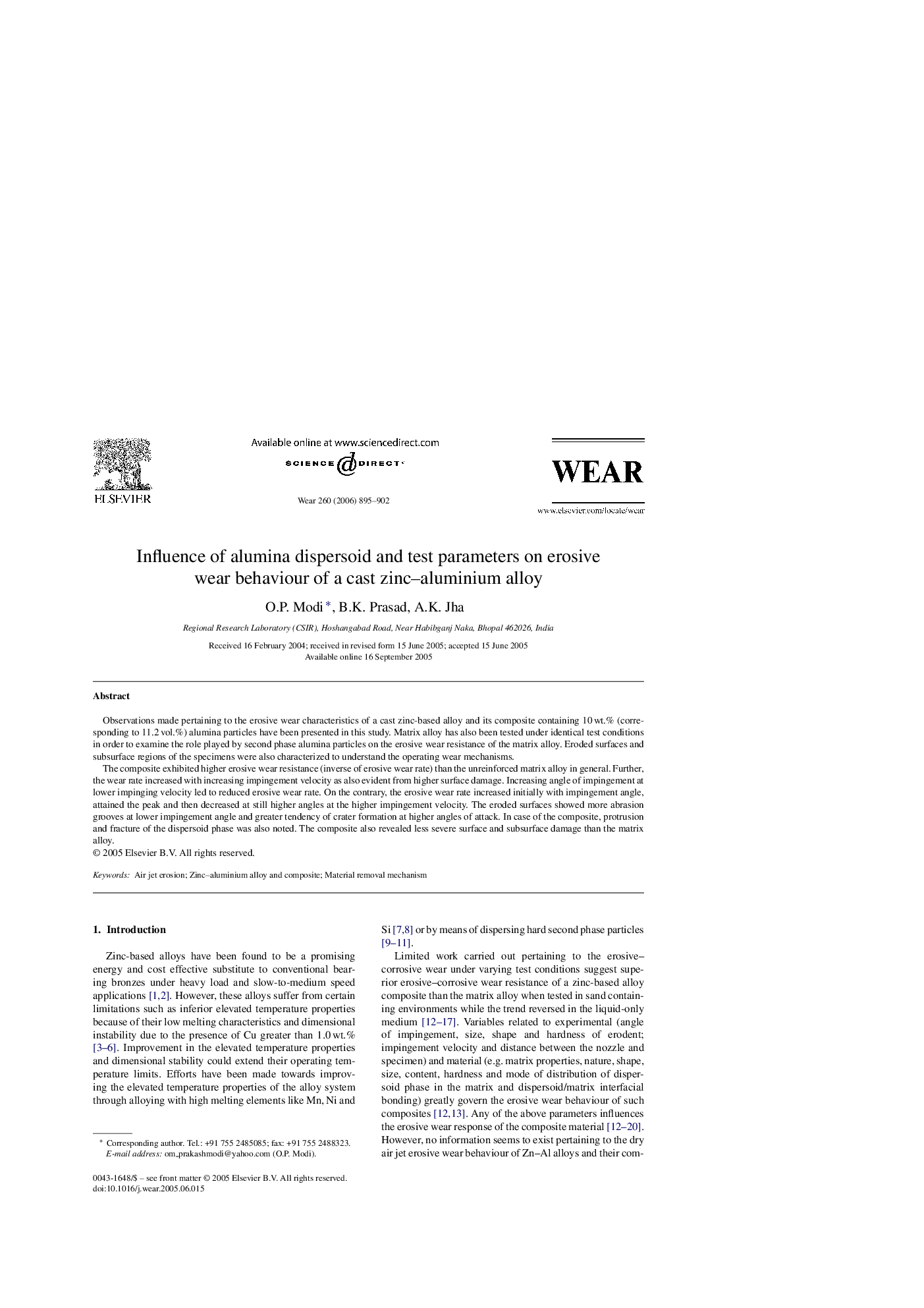| Article ID | Journal | Published Year | Pages | File Type |
|---|---|---|---|---|
| 620256 | Wear | 2006 | 8 Pages |
Abstract
The composite exhibited higher erosive wear resistance (inverse of erosive wear rate) than the unreinforced matrix alloy in general. Further, the wear rate increased with increasing impingement velocity as also evident from higher surface damage. Increasing angle of impingement at lower impinging velocity led to reduced erosive wear rate. On the contrary, the erosive wear rate increased initially with impingement angle, attained the peak and then decreased at still higher angles at the higher impingement velocity. The eroded surfaces showed more abrasion grooves at lower impingement angle and greater tendency of crater formation at higher angles of attack. In case of the composite, protrusion and fracture of the dispersoid phase was also noted. The composite also revealed less severe surface and subsurface damage than the matrix alloy.
Keywords
Related Topics
Physical Sciences and Engineering
Chemical Engineering
Colloid and Surface Chemistry
Authors
O.P. Modi, B.K. Prasad, A.K. Jha,
